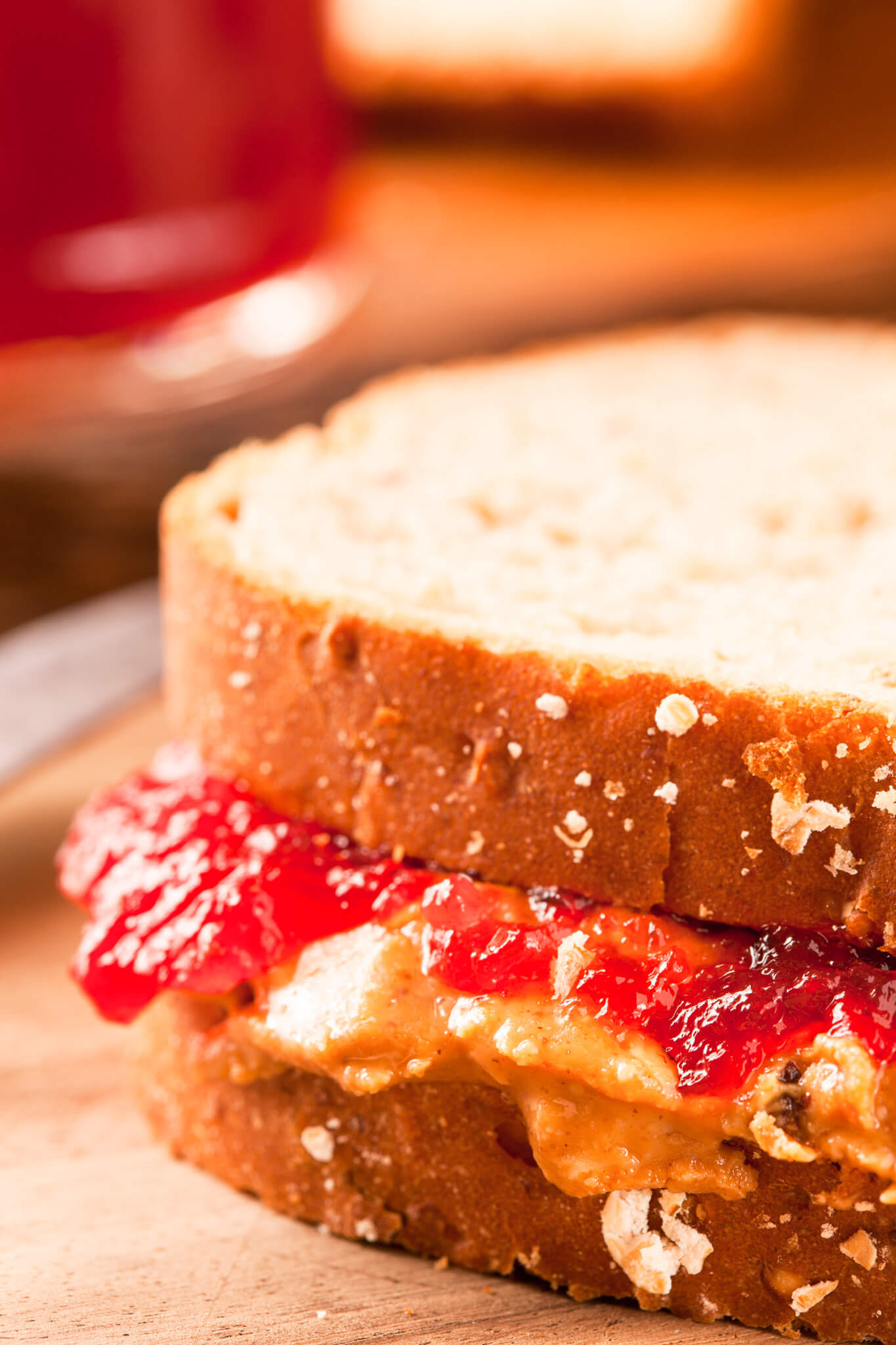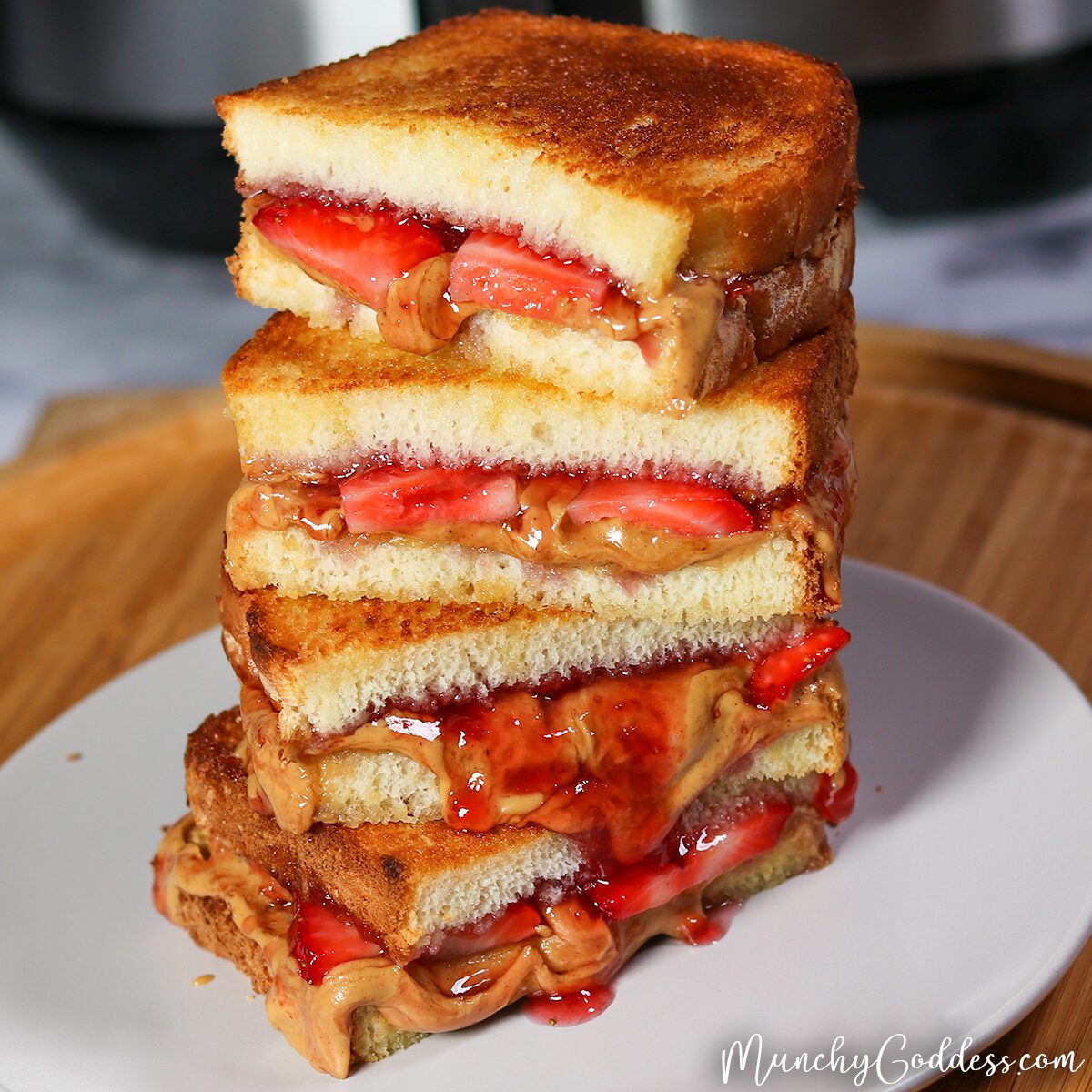Peanut butter and jelly sandwich calories wheat bread
The classic peanut butter and jelly sandwich is a beloved staple in many households, enjoyed by children and adults alike. While often considered a quick and easy meal option, it is important to take a closer look at its nutritional value, especially when made with different types of bread. In this article, we will specifically examine the peanut butter and jelly sandwich calories wheat bread variation, exploring how it stacks up against other options and what you need to know about its overall health implications.
The Anatomy of a Peanut Butter and Jelly Sandwich

Understanding the components that make up a peanut butter and jelly sandwich is crucial for analyzing its caloric content.
Ingredients Breakdown
At the heart of every peanut butter and jelly sandwich are three main ingredients: bread, peanut butter, and jelly or jam. Each of these components contributes to the total caloric count, and it’s essential to look at them individually.
Bread Wheat bread is a common choice for this sandwich due to its nutritional benefits compared to white bread. Whole grain or whole wheat varieties tend to be rich in fiber, vitamins, and minerals, making them a healthier alternative. The caloric content of two slices of whole wheat bread can vary, but it generally ranges between 130 and 180 calories. This can be influenced by factors like the brand, thickness of the slices, and whether the bread contains added ingredients.
Peanut Butter Peanut butter is packed with healthy fats, protein, and a variety of nutrients such as magnesium and vitamin E. However, it is also calorie-dense, with a typical serving (about two tablespoons) ranging from 190 to 210 calories. Natural peanut butter options usually contain fewer additives, resulting in a more nutritious choice overall.
Jelly or Jam The sweet spread that complements peanut butter can vary widely in caloric content depending on the type and brand. Traditional fruit preserves and jams might have around 50 to 70 calories per tablespoon, while lower-sugar alternatives could range from 10 to 30 calories. It’s worth noting that the flavor profile may change significantly based on the type of jelly chosen.
Caloric Overview
Adding these components together provides an average caloric estimate for a peanut butter and jelly sandwich made with wheat bread. When looking at the wheat bread variant, one could expect a total of approximately 370 to 460 calories for a standard serving. Of course, this number can fluctuate significantly based on portion sizes and specific ingredients used.
Nutritional Benefits of Wheat Bread

In recent years, there has been a growing emphasis on the health benefits of consuming whole grains. Wheat bread is often recommended as a part of a balanced diet, and understanding its advantages can offer insights into why this specific sandwich choice might be beneficial.
Rich in Fiber
One of the primary benefits of wheat bread is its high fiber content. Fiber plays a vital role in digestive health, helping to regulate bowel movements and prevent constipation. Furthermore, a high-fiber diet can help maintain a healthy weight by promoting feelings of fullness, thereby potentially reducing overall caloric intake.
Consuming fiber-rich foods, such as wheat bread, can also positively affect blood sugar levels, leading to better management for individuals with diabetes. As blood sugar spikes are minimized, the risk of energy crashes and cravings decreases.
Source of Essential Nutrients
Wheat bread is not just a vehicle for spreading peanut butter and jelly; it is also a source of essential nutrients. Whole wheat bread typically contains B vitamins, such as niacin, riboflavin, and folate, which are crucial for energy metabolism. Additionally, minerals like iron and zinc contribute to overall health and wellness.
When choosing wheat bread, opt for brands that list “100% whole wheat” as the first ingredient to ensure you’re getting the maximum nutritional benefit. This way, you can enjoy your peanut butter and jelly sandwich while also nourishing your body.
Low Glycemic Index
Another advantage of consuming wheat bread over refined white bread is its lower glycemic index (GI). Foods with a low GI release glucose slowly into the bloodstream, providing sustained energy levels without the rapid spikes associated with high-GI foods. This characteristic can be particularly advantageous for those looking to manage their energy levels throughout the day.
Moreover, low-GI foods can contribute to improved appetite control. When hunger pangs don’t hit as intensely, it’s easier to stick to a healthy eating routine.
Exploring Peanut Butter Options

While peanut butter can be a nutrition powerhouse, not all peanut butters are created equal. The type of peanut butter you choose can dramatically influence the overall caloric content of your sandwich and its health benefits.
Natural vs. Processed Peanut Butter
Natural peanut butter is made with just ground peanuts, sometimes with a pinch of salt. On the other hand, processed peanut butter often contains added sugars, oils, and preservatives. These additional ingredients not only increase the caloric content but can also diminish the health benefits of the product.
When comparing natural and processed options, you’ll likely notice a difference in taste and texture. Natural peanut butter tends to have a grittier texture and a more intense peanut flavor, while processed versions are creamier and sweeter. If you’re watching your calorie intake, opting for the natural version can provide a more wholesome and satisfying experience.
Healthier Alternatives
If you’re looking for ways to cut down on calories without sacrificing flavor, consider trying peanut butter alternatives. Almond butter, cashew butter, and sunflower seed butter can provide similar textures and flavors with varying nutritional profiles. For example, almond butter may have a slightly higher calcium content than peanut butter, while sunflower seed butter is often free from the common allergens found in nut-based spreads.
Using these alternatives can diversify your meals and may introduce new nutrients into your diet. Just be mindful of portion sizes, as most nut butters, regardless of the type, remain calorie-dense.
Portion Control
Another key factor to consider when enjoying a peanut butter and jelly sandwich is portion control. It’s easy to underestimate how much peanut butter you’re spreading onto your bread. A heaping spoonful may quickly add an extra hundred calories, which can significantly alter the overall caloric content of your meal.
To help mitigate this, try using a measuring spoon or even a kitchen scale to gauge your servings accurately. Aim for a balanced approach, ensuring that you enjoy the flavors without going overboard on calories.
The Role of Jelly in Your Sandwich
Jelly serves as the sweet counterpart to peanut butter, but its nutritional contributions can vary widely depending on its composition.
Sugar Content
Traditional jelly is primarily made up of sugar and fruit juice or puree. Due to its high sugar content, it’s essential to be cautious about how much jelly you add to your sandwich. Excessive sugar consumption has been linked to a myriad of health issues, including obesity, type 2 diabetes, and heart disease.
When weighing your options, consider selecting lower-sugar varieties or even making homemade jelly using fresh fruits and natural sweeteners. This allows you to control the sugar content while still enjoying that delightful sweetness that pairs so well with peanut butter.
Fruit-Based Alternatives
For those seeking a healthier alternative to traditional jelly, consider incorporating fresh fruit slices instead. Sliced bananas, strawberries, or apples bring natural sweetness into your sandwich while adding fiber and essential vitamins.
Not only do these fruits enhance the flavor profile of your sandwich, but they also elevate its nutritional value. The added texture and freshness can create a more dynamic eating experience, transforming a simple sandwich into a nutritious meal.
Balancing Flavor and Nutrition
The goal of any meal should be to strike a balance between flavor and nutrition. It’s entirely possible to enjoy a delicious peanut butter and jelly sandwich without compromising on health. By being mindful of your choices in ingredients – from the type of bread to the jelly you select – you can craft a sandwich that satisfies your cravings and meets your dietary needs.
Conclusion
In conclusion, the classic peanut butter and jelly sandwich offers a diverse range of nutritional benefits, especially when made with wheat bread. Understanding the peanut butter and jelly sandwich calories wheat bread combination allows us to make informed choices that align with our health goals.
By focusing on the individual components – the bread, peanut butter, and jelly – we can optimize our sandwiches for both flavor and nutrition. Embracing whole grains, exploring different nut butters, and considering healthier jelly options can transform this simple meal into a wholesome, satisfying choice.
Remember, moderation is key. Enjoying your favorite peanut butter and jelly sandwich mindfully can contribute to a well-rounded diet, paving the way for a healthier lifestyle overall.



